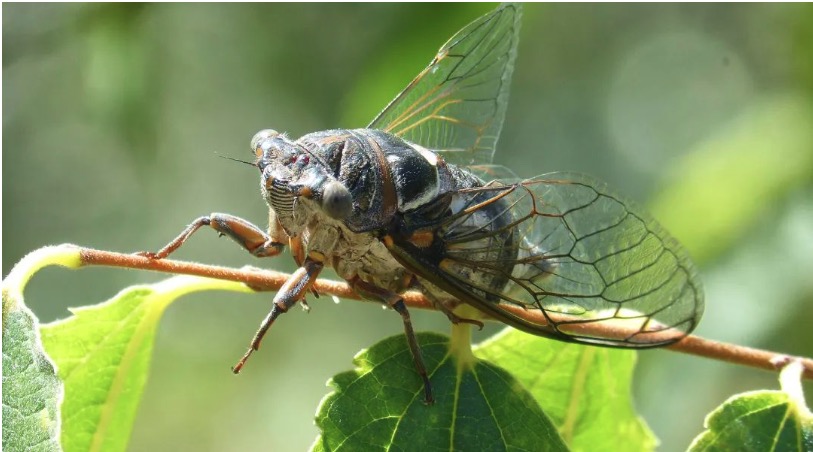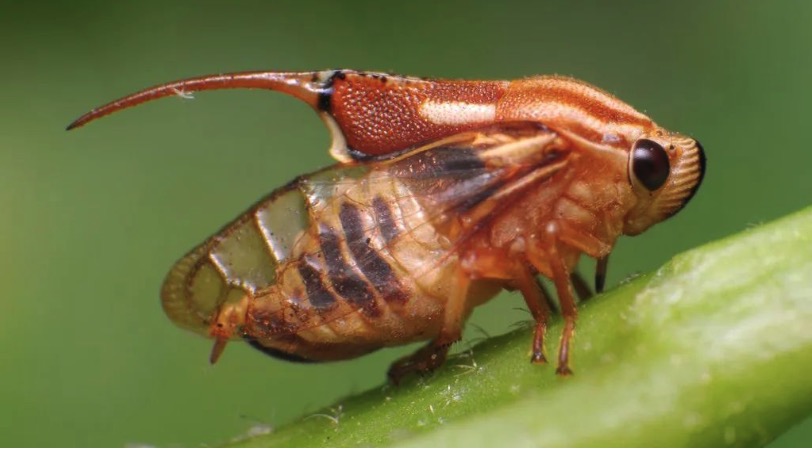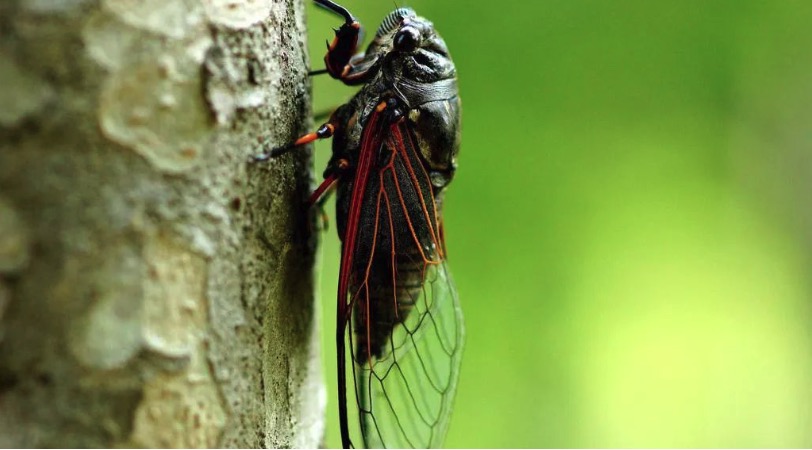Cicadas are an insect that no one is unfamiliar with. In our impression, the chirping of cicadas has already become a symbol of summer.
However, it is not an easy thing for a cicada to climb up to the branch and start its chirping, because the growth cycle of cicadas is relatively long. After the male and female cicadas are combined, they will lay eggs in the cracks of the branches, and each female cicada can lay about 600 eggs at a time, depending on the variety. After about 6 to 8 weeks, the eggs hatch, and the larvae fall to the ground and dive underground, and then they begin their long underground life. These larvae obtain nutrients by sucking the sap of the tree roots, and after going through four moltings, they can break through the ground, which usually takes several years to more than ten years.

According to the different growth cycles of cicadas, it can be divided into 1-year cicadas, 2-year cicadas, 3-year cicadas, 5-year cicadas, 13-year cicadas, 17-year cicadas, and so on. Have you noticed any patterns? Although the growth cycles of different cicadas vary greatly, they all have one thing in common, that is, their growth cycles are all prime numbers. What is a prime number? A number that can only be divided by 1 and itself is a prime number. Of course, 1 is not a prime number, but it also conforms to the rule of prime numbers. Do you feel very interesting? Is the growth cycle of cicadas just a coincidence or contains some particular meaning? Insects have many natural enemies in the natural world, and cicadas are a relatively weak member of the insect family, and they have almost no decent attacking or defensive skills, so there are especially many natural enemies. From small to various parasites, to other insects and various birds, it will pose a great threat to the survival of cicadas.
This is why most of the life of cicadas is spent underground. Compared with the ground, the underground environment is much safer. However, no matter how good the underground is, they still have to climb up to the branches to reproduce, so how can they maximize the guarantee of their own safety after breaking through the ground? It is to rely on the growth cycle. Suppose there is a kind of cicada whose growth cycle is not a prime number, but 12 years, what will happen? There will be a large number of natural enemies that meet this kind of cicada.

Why? Because the natural enemies with a growth cycle of 1 year, 2 years, 3 years, 4 years, and 6 years will all meet this kind of cicada, in this way, the number of cicadas will decrease significantly due to the feeding of natural enemies, or even become extinct. However, because the growth cycle of cicadas is a prime number, the situation is completely different. Because except for the natural enemies with a growth cycle of 1 year or the same as the cicada, the rest of the natural enemies must meet the least common multiple of the two.
For example, taking the 13-year cicada as an example, it will meet a natural enemy with a growth cycle of 3 years only once every 39 years, because the least common multiple of 13 and 3 is 39. It is by relying on this unique mathematical wisdom that this weak insect, the cicada, can survive in nature and last for a long time. It is difficult for cicadas and their natural enemies to meet, and it is also difficult for two cicadas with different cycles to meet. The 13-year cicada and the 17-year cicada are called "periodic cicadas" because of their very long growth cycle, and both of these periodic cicadas live in the United States.
Since the least common multiple of 13 and 17 is 221, that is to say, it takes 221 years for the 13-year cicada and the 17-year cicada to meet once. According to the records, the last time the 13-year cicadas and 17-year cicadas met in the United States was in 1803.
At present, there are three subspecies of 13-year cicadas in the United States, with a total of three populations, and there are four subspecies of 17-year cicadas, with a total of two populations. This time, the ones that will meet are the Brood ⅩⅢ of the 17-year cicadas and the Brood ⅪⅩ of the 13-year cicadas. It is expected that hundreds of billions of cicadas will climb onto the branches of the United States this year, and it is destined to welcome a lively summer. Will there really be so many cicadas? There is no doubt about this, because in 2021, another two populations of periodic cicadas met, and according to the statistics of that year, about 30 billion cicadas appeared simultaneously, and this meeting may be more spectacular than that.





Leave a Reply